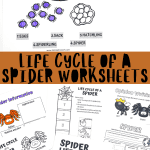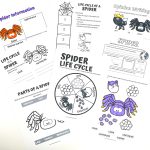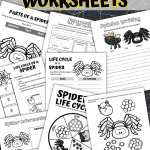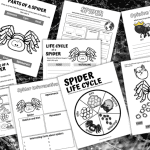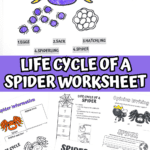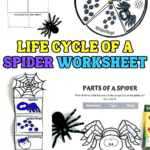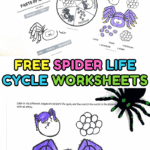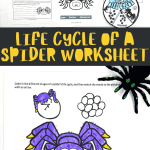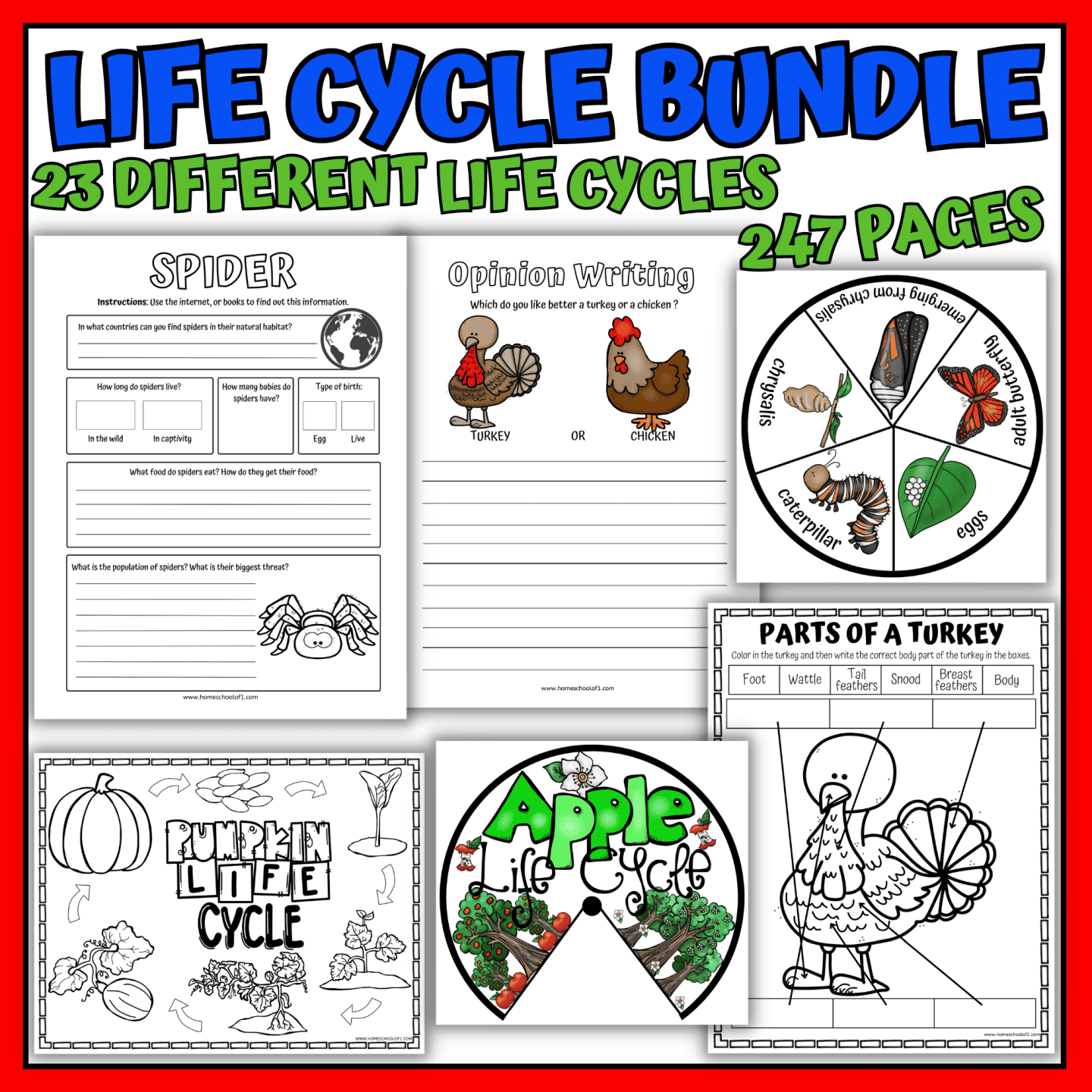Free Spider Life Cycle Worksheet for Kids
A spider life cycle worksheet is a simple way to help kids understand how spiders grow, from tiny eggs to full-grown adults.
When we worked on this at home, the idea of spiderlings floating away on silk really stuck.
These free life cycle worksheets break it all down in a way that’s easy to follow, with coloring, labeling, and a couple of fun crafts to keep things interesting.
It’s a solid fit for early science lessons, whether at home or in the classroom.
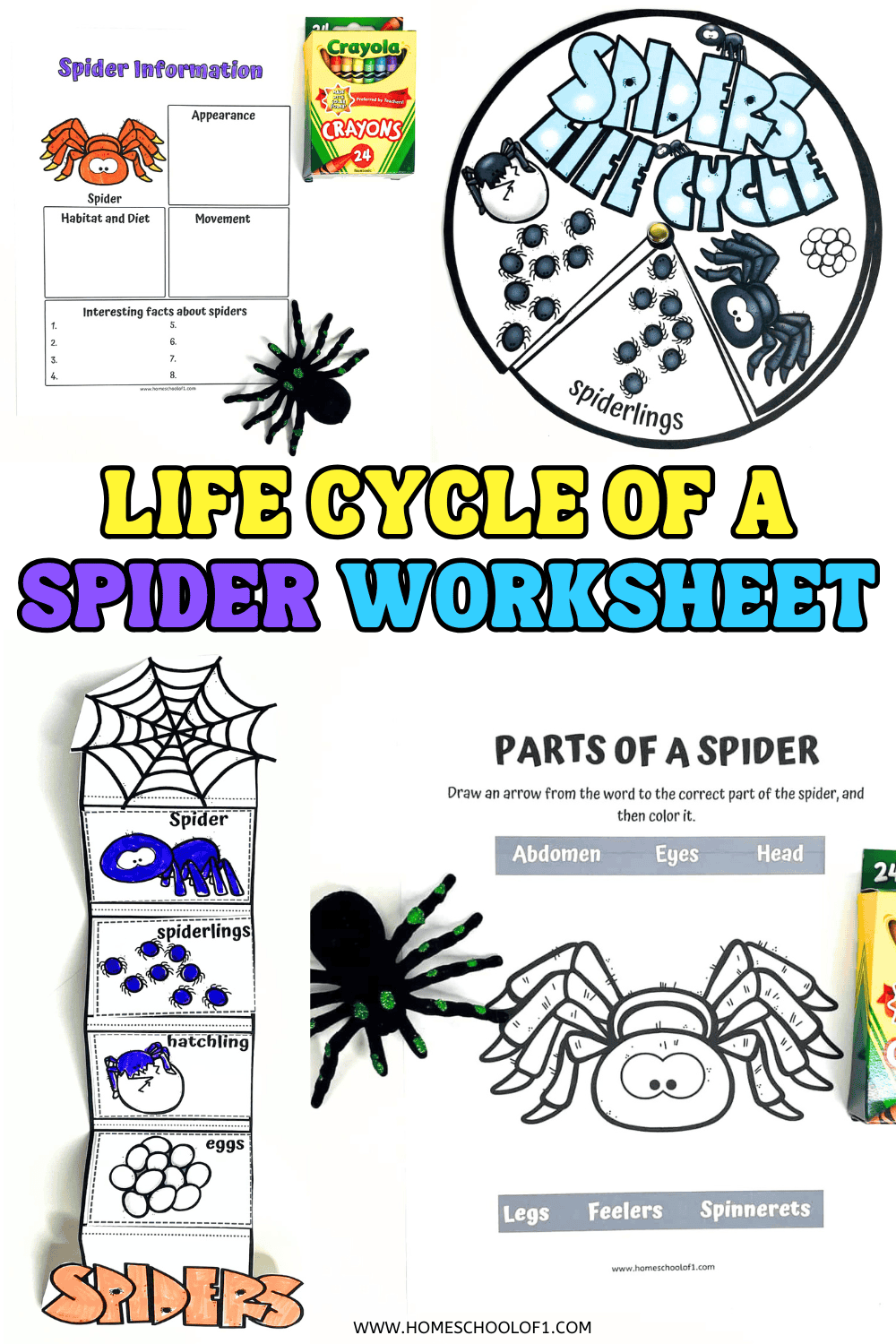
**This post may contain affiliate links. As an Amazon Associate and a participant in other affiliate programs, I earn a commission on qualifying purchases.**
Life Cycle of a Spider Worksheet Activities
These spider worksheet activities walk kids through each stage of growth, from egg to adult spider.
Whether you’re using them in a classroom or at the kitchen table, they mix science, art, and writing in a way that keeps learning hands-on and engaging.
What You’ll Need
To complete most of the worksheets and crafts, you’ll just need a few basic supplies:
- cardstock (printer paper will also work)
- coloring pens
- paper cutter or scissors
- glue
- brass fasteners
Spider Research
The first page is a planning sheet where kids answer questions about spiders, their appearance, how they move, what they eat, and where they live.
It’s a good way to introduce key vocabulary before jumping into the rest of the activities.
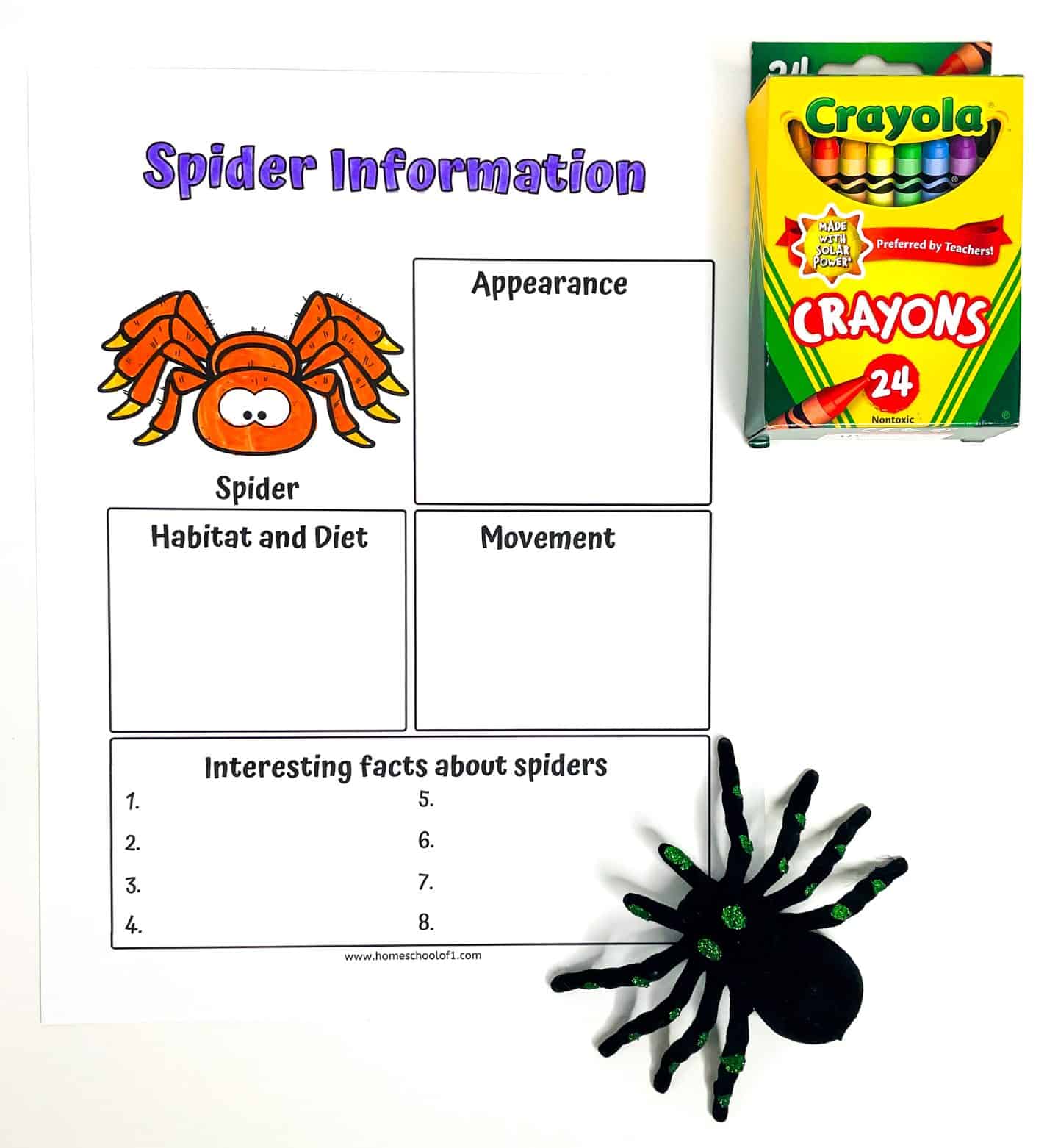
Fun Facts About Spiders
Here are a few spider facts to get kids thinking. You can read through these or encourage them to research their own:
- Spiders are famous for their silk spinning abilities. They use silk to build webs for catching insects, make egg sacs, and even create safety lines to help them move around.
- Most spiders have eight legs, but did you know they also have two body parts? The front part is called the cephalothorax, and the back part is the abdomen.
- Different spider species create all sorts of cool webs. Some make spiral webs like a pinwheel, while others build messy-looking cobwebs. Each web design helps them catch prey in a unique way.
- Spiders don’t have great vision like humans do, but they have super senses! Some can feel vibrations in their webs to know when an insect is caught, and others can taste with their feet to check if something is edible.
- Spiders are amazing builders. Some can rebuild their entire webs in just one night!
- Many spiders hang upside down in their webs, just like acrobats. When they catch prey, they use their sharp fangs to inject venom and turn the prey’s insides into a liquid snack.
- Spiders come in all sorts of colors and sizes. Some are bright and colorful, while others blend in perfectly with their surroundings.
- Some spider species are so light that they can catch the wind and fly through the air! They create a thread of silk, and when the wind catches it, they’re lifted up and carried to new places.
Let kids add any fun facts they discover themselves.
Writing Activity: Ant or Spider?
One of our favorite worksheets in this pack is an opinion prompt—Which do you like better, ants or spiders?
Kids get to make their case with a few sentences and support it with what they’ve learned.
If you’re learning about insects too, our life cycle of an ant worksheets are a great follow-up.
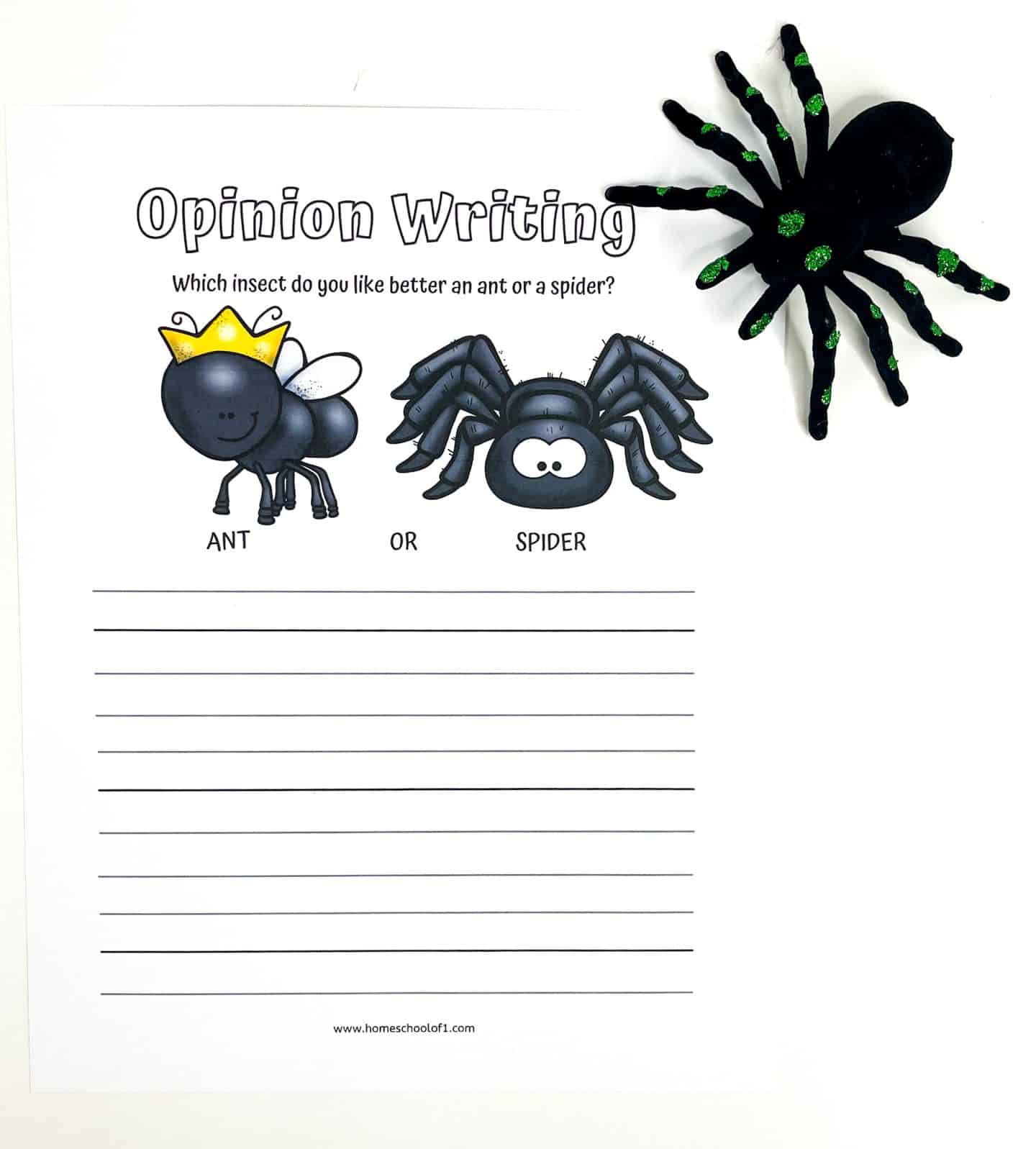
Spider Fact Sheet
This worksheet asks kids to do a bit of online research to complete a spider fact profile. It’s a great mini-research project and pairs well with library books or science websites.
They need to find:
- In what countries can you find spiders in their natural habitat?
- How long do spiders live? In the wild, and in captivity
- How many babies do they typically have?
- The type of birth, is it egg or live?
- What food do spiders eat? How do they get their food?
- What is the population of spiders? What is their biggest threat?
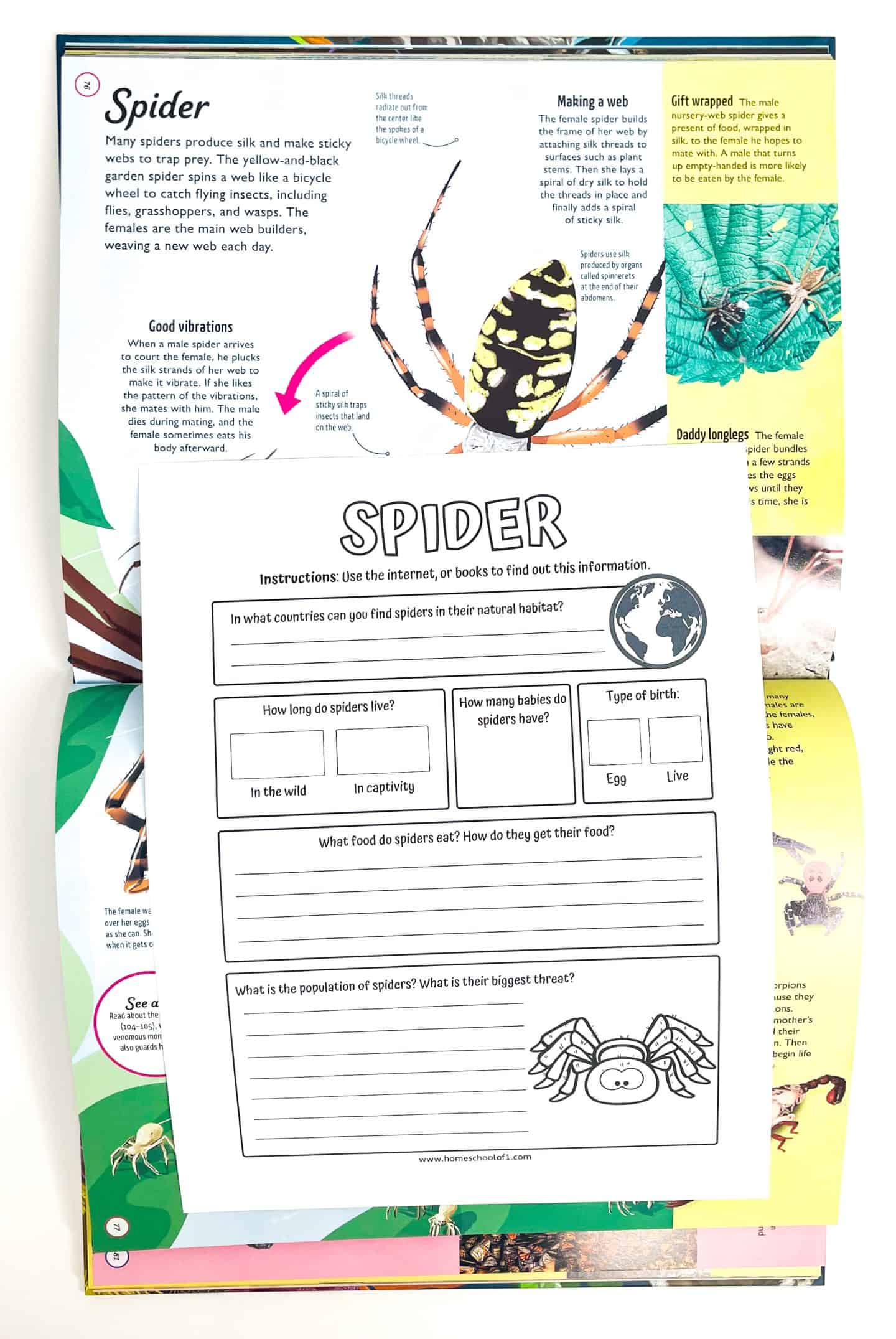
Explore the Four Life Cycle Stages
On this page, kids explore the main phases of a spider’s life: egg, hatchling, spiderling, and adult.
We like using the Life Cycles book to support this worksheet, along with any spider figurines or life cycle kits you might already have.
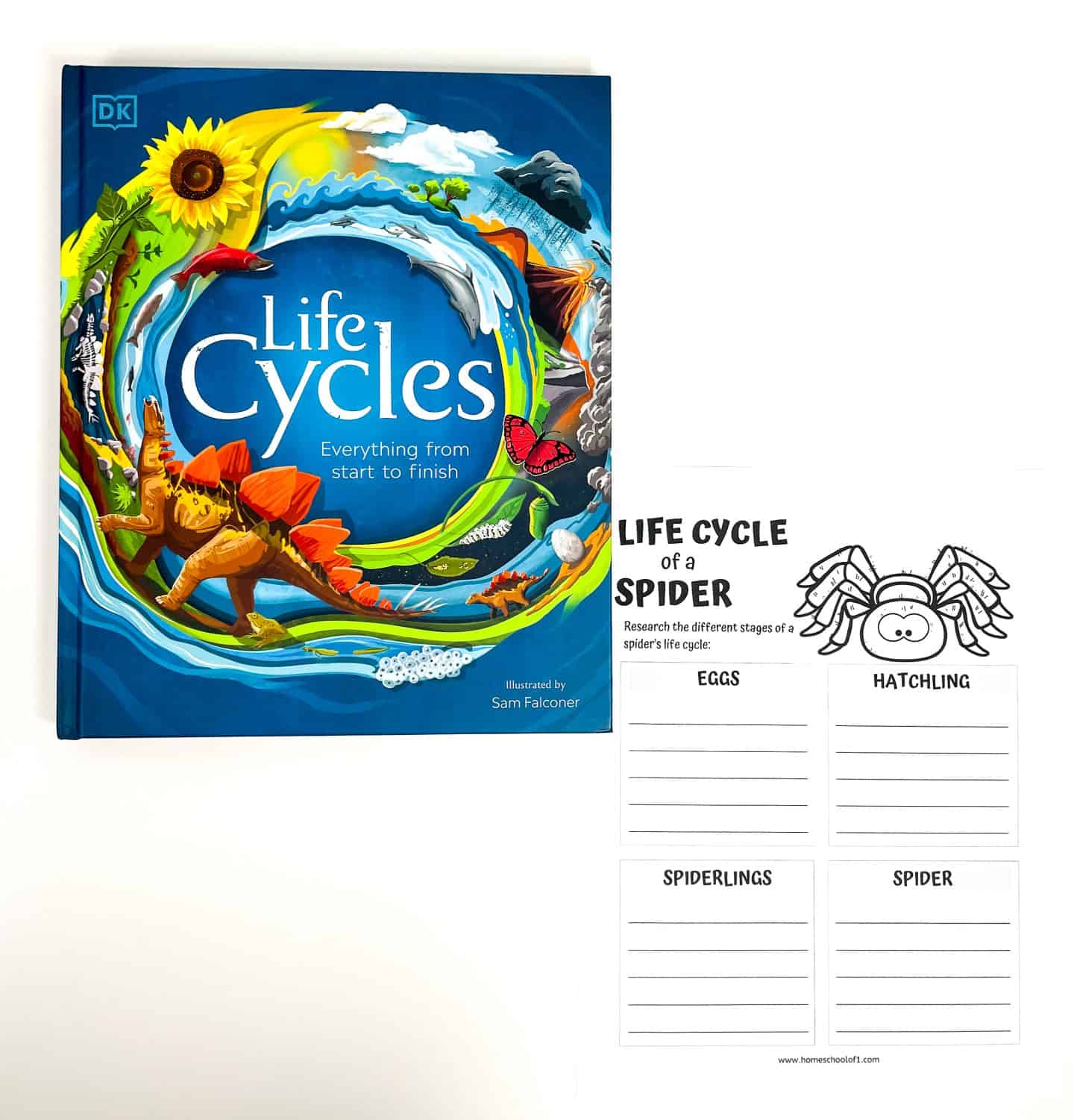
Label the Parts of a Spider
This simple label the parts of a spider worksheet lets kids label parts like the legs, spinnerets, eyes, and abdomen.
It reinforces spider anatomy and works well alongside the craft or book sections.
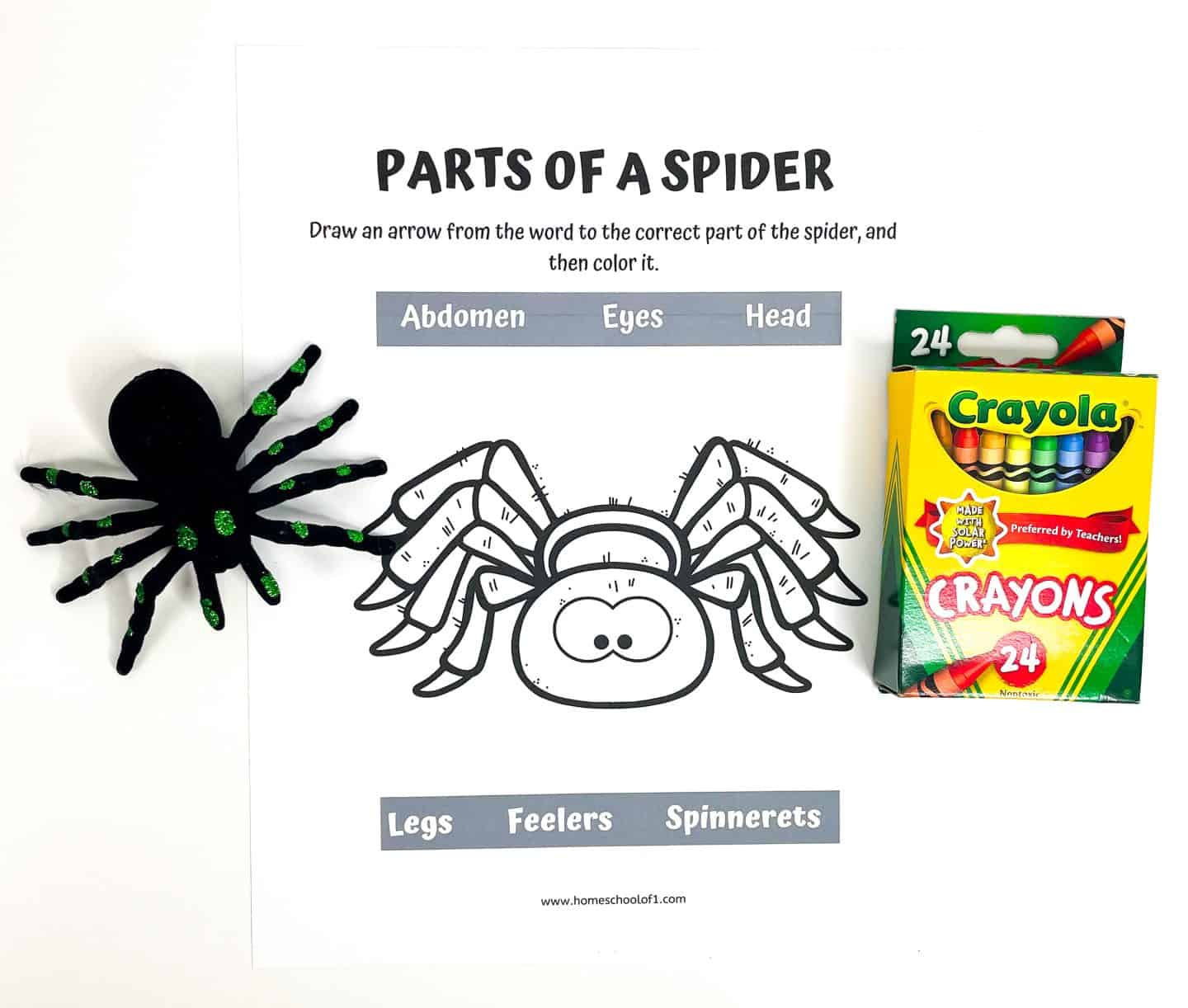
Color and Sequence the Life Cycle
Kids color each life cycle stage and place them in the correct order. It’s a good visual review that combines both labeling and sequencing skills.
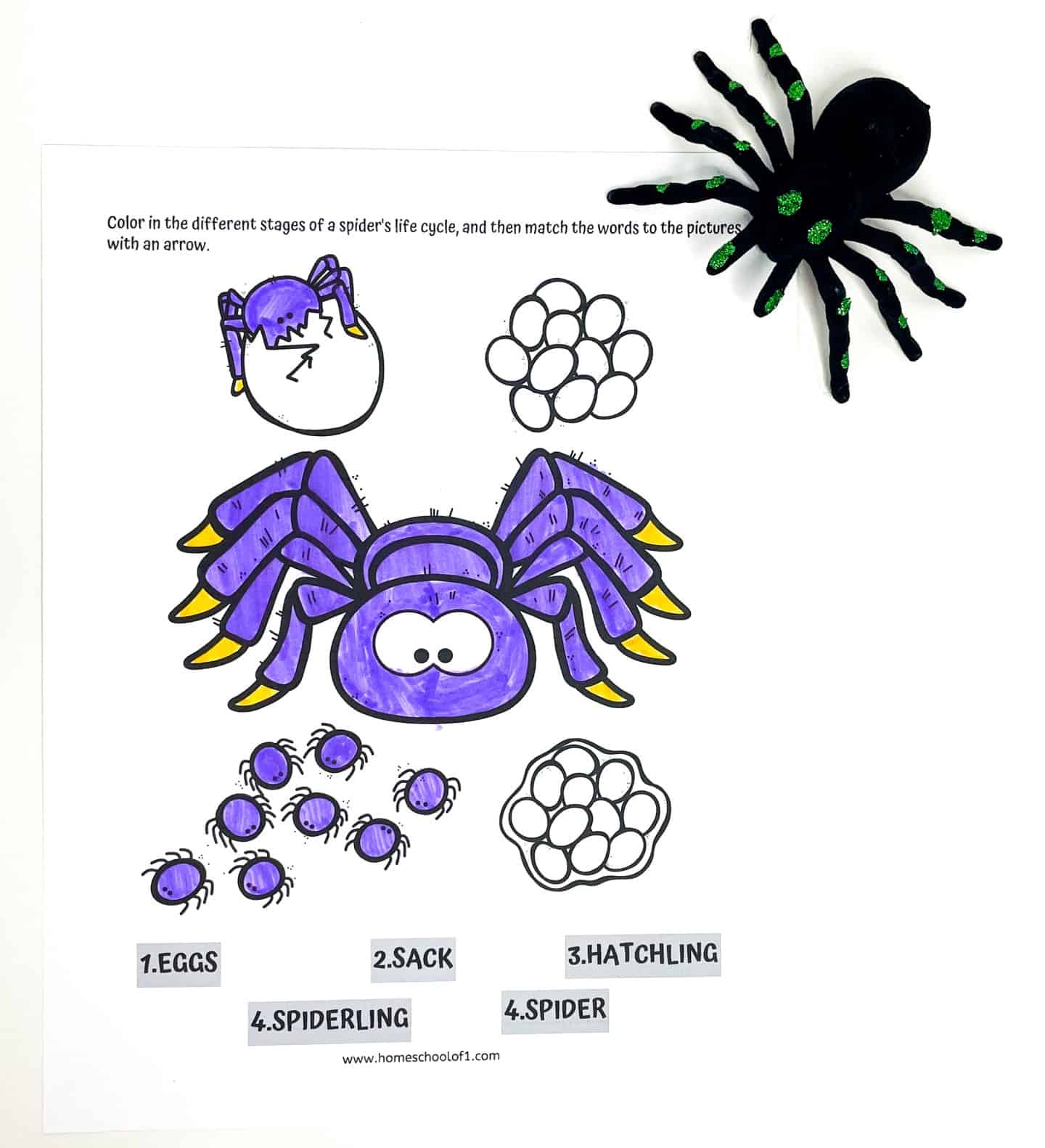
Spider Craft: Cut and Fold
This spider craft is a fun, hands-on way to reinforce the life cycle stages.
Kids color and cut out the stages, sort them into order, then glue and fold the finished piece.
Younger children may need a bit of help with cutting.
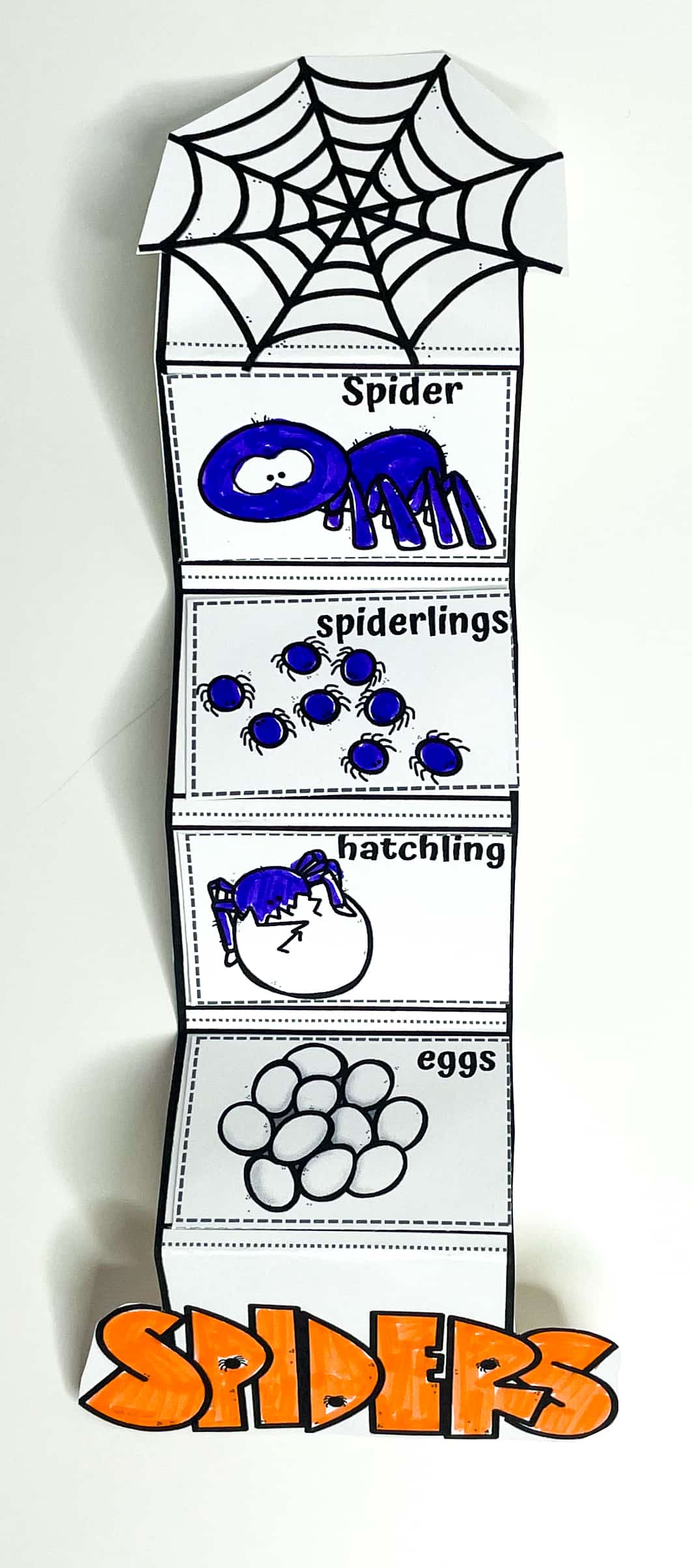
Spider Spinner Wheel Craft
For a more interactive craft, this spinner wheel shows each life stage through a rotating cutout.
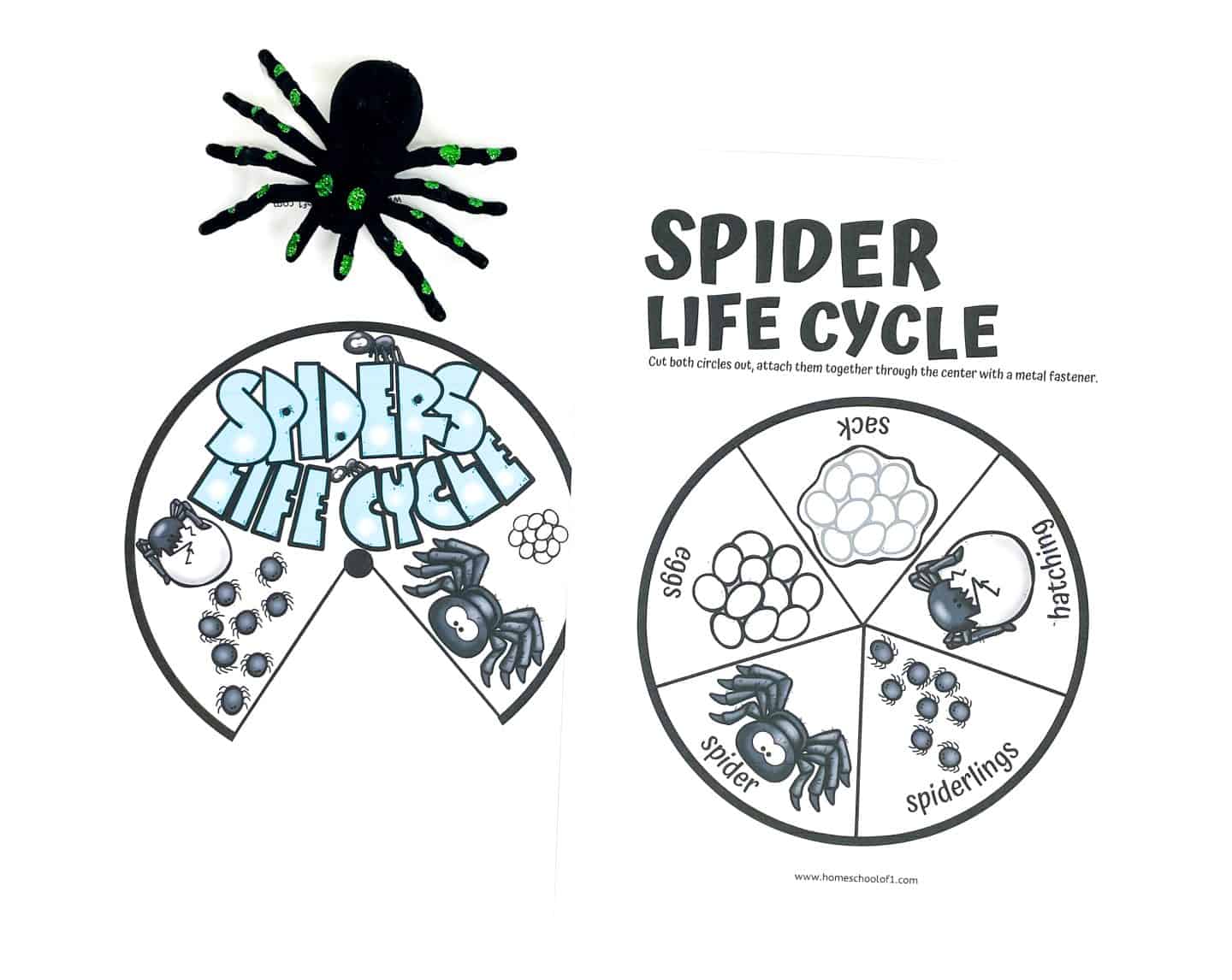
After assembling the two circles with a fastener, kids can spin through each stage to review what they’ve learned in a tactile way.
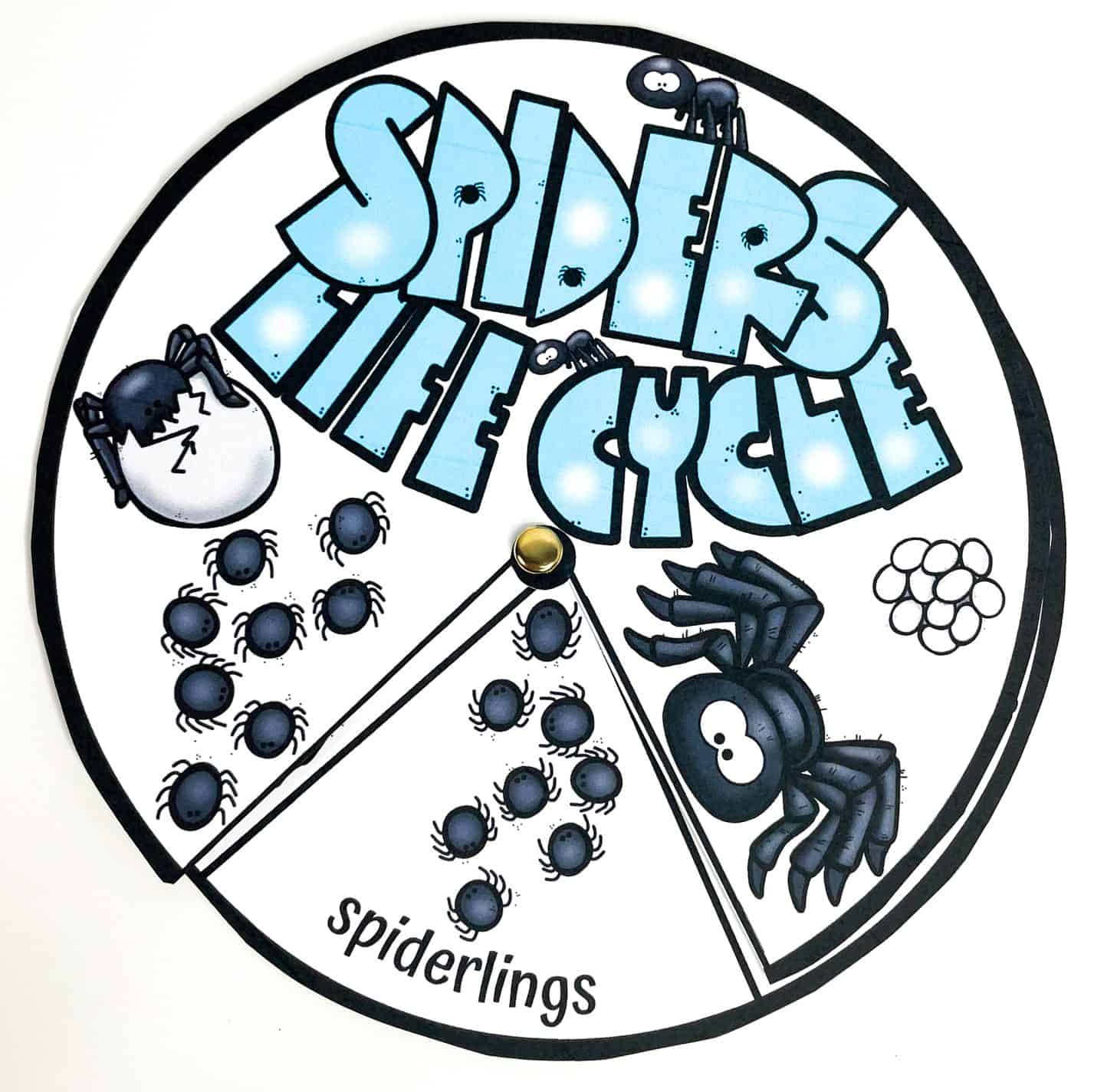
Best Spider Books for Kids
After finishing the spider life cycle worksheets, we always like to follow up with a book or two. These are a few favorites that pair really well with the activities:
National Geographic Readers: Spiders – This one is packed with real photos and clear facts, perfect for curious kids who want to see what spiders actually look like and learn what they do. It covers a variety of species and gives a great overview without being too heavy.
I’m Trying to Love Spiders – If your kids are a little hesitant around spiders (mine definitely was!), this book is a fun and lighthearted way to shift their perspective. It’s silly, honest, and surprisingly informative—it got a few laughs in our house.
Are You a Spider? – A great pick for younger kids who like imaginative stories. It walks through a spider’s daily life in a way that feels playful and approachable, and the illustrations help bring it all to life.
Get the Free Printable Spider Life Cycle Worksheets Here!
If you’re short on prep time, we also have a complete life cycle bundle with 247 pages covering 23 different plants and animals—everything in one place and ready to print.
Ready to grab your free printable? Just pop your name and email into the form below, and it’s all yours!
If you don’t see the form below, click here to get the free spider worksheets.
Additional Spider Activities
If your kids are still curious after the worksheets, these spider-themed crafts are a great way to keep the fun going:
- Spider handprint art – A simple keepsake craft that’s perfect for younger kids.
- Simple spider craft from Living Life and Learning – Easy to make and great for practicing fine motor skills.
- Bottle stop spider craft for preschoolers from Homeschool Preschool – A creative use of recyclables for little hands.
- Toilet paper roll pipe cleaner spiders from Simple Everyday Mom – Classic and fun, with pipe cleaners for legs and lots of room for personality.
Last Updated on 30 April 2025 by Clare Brown

